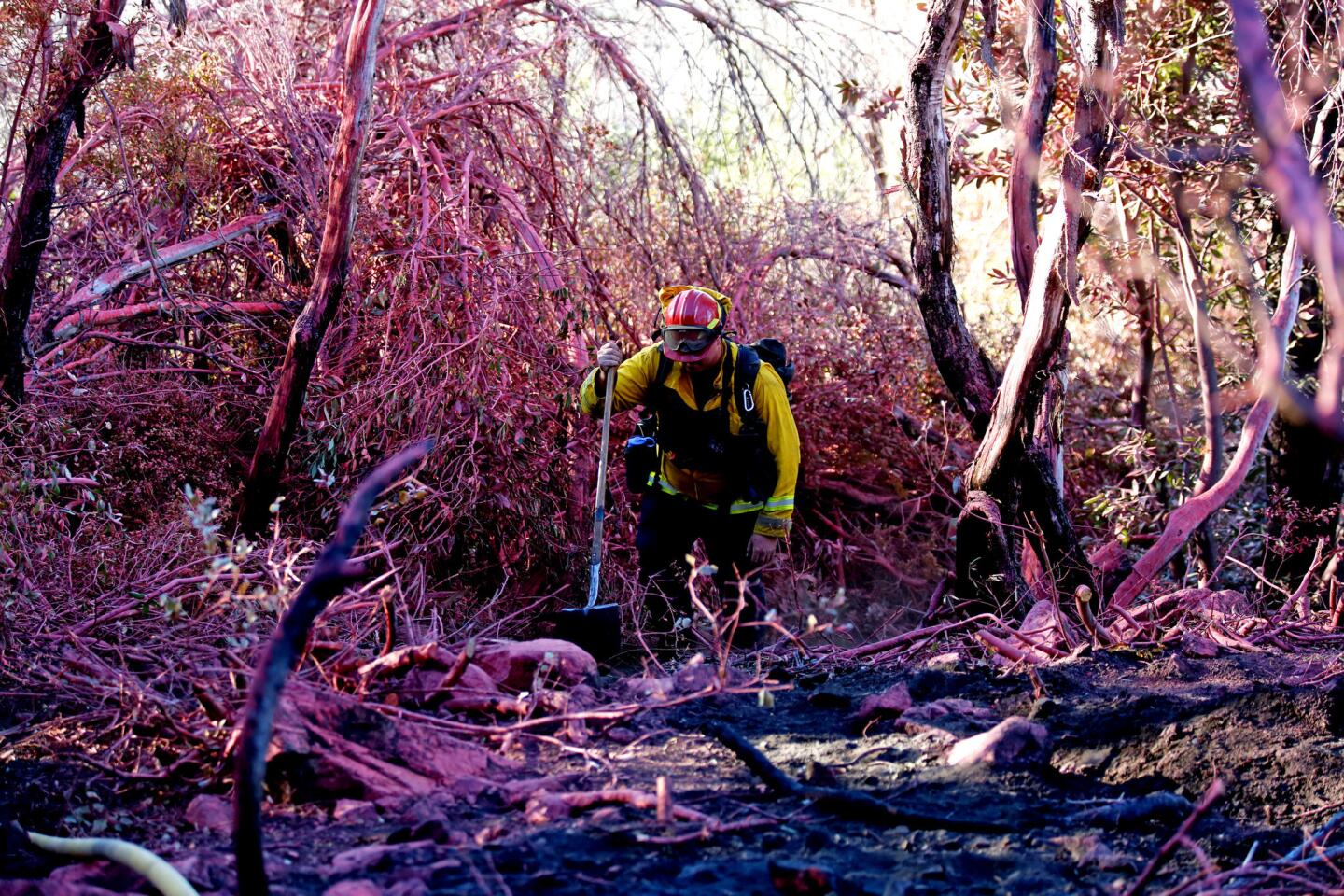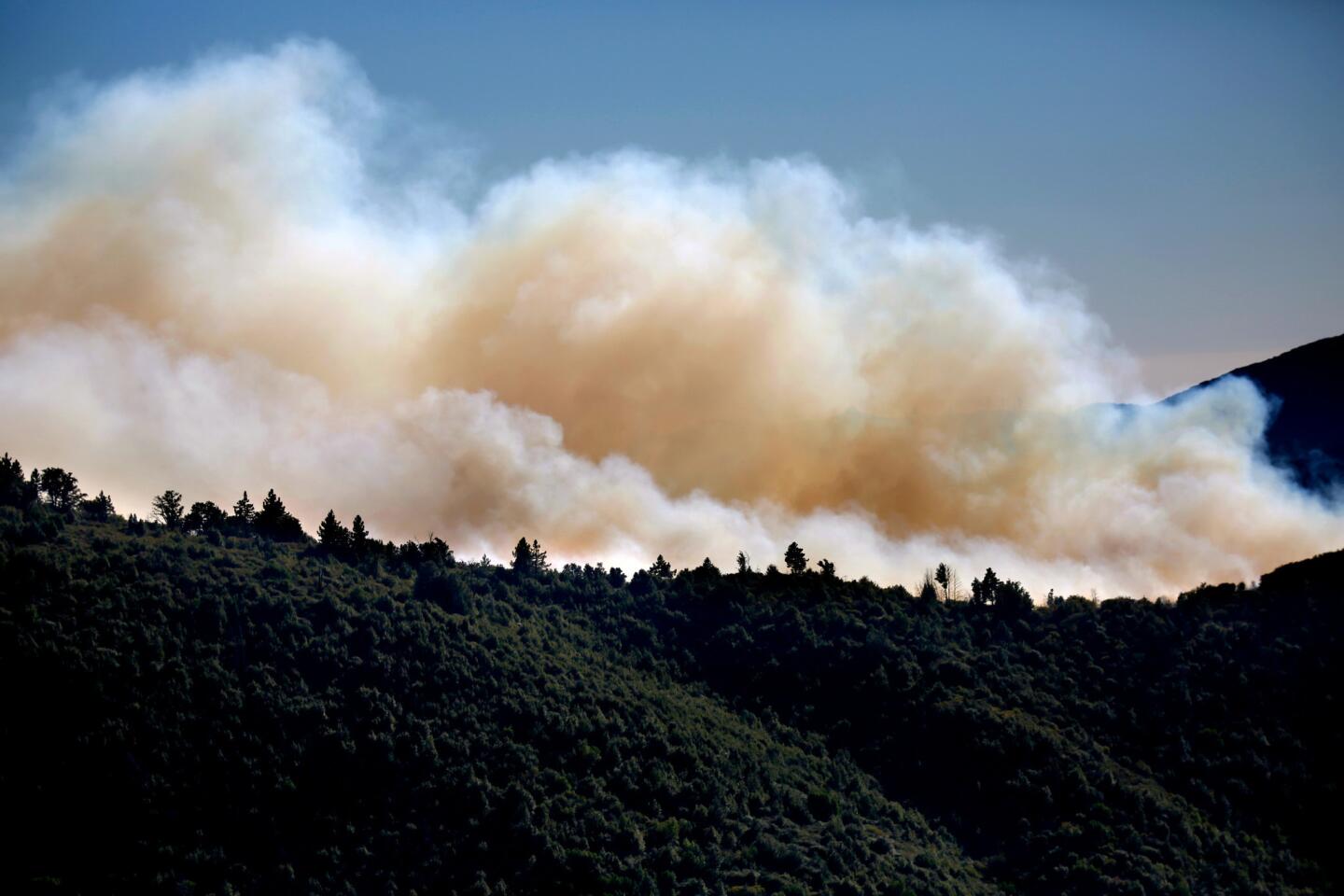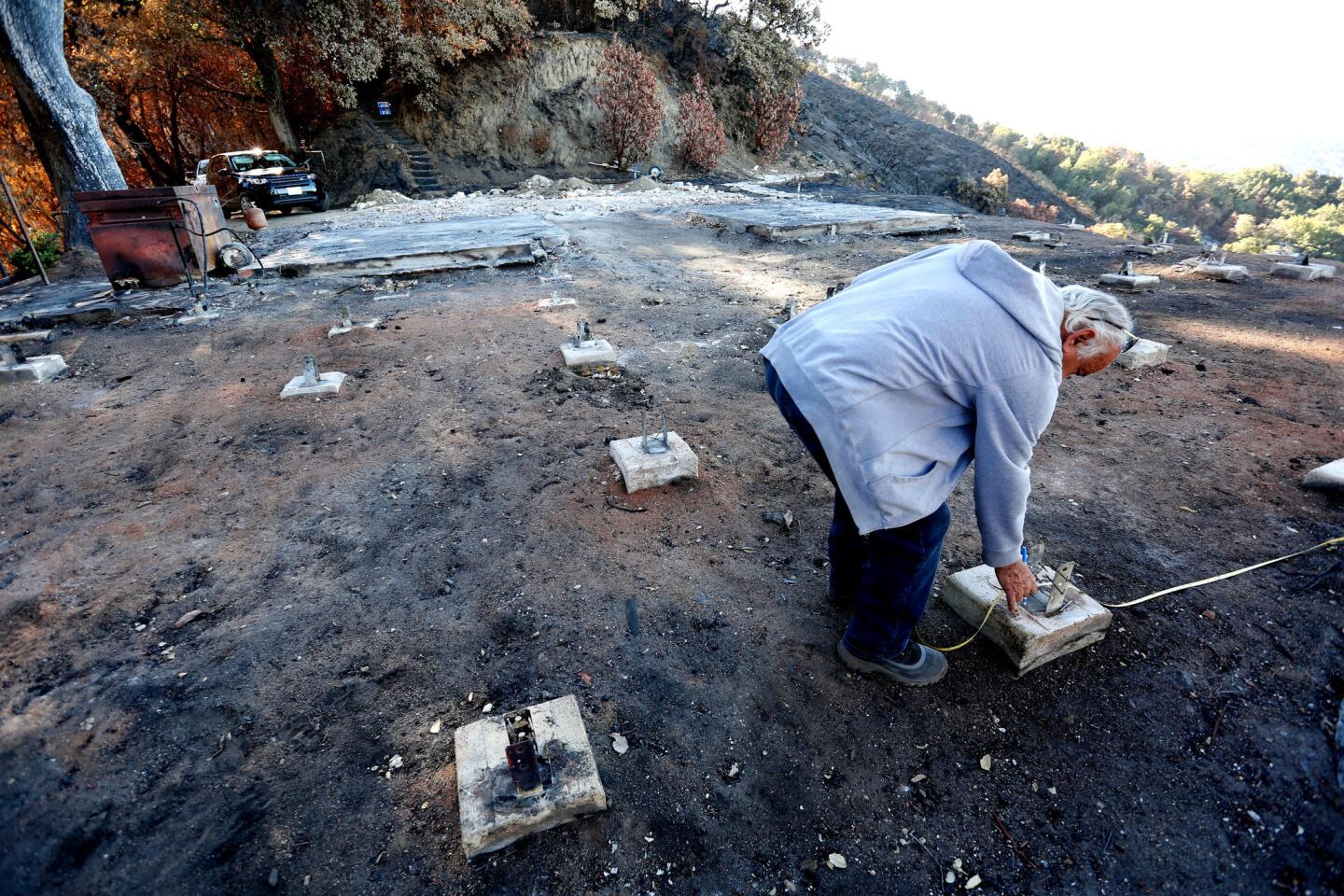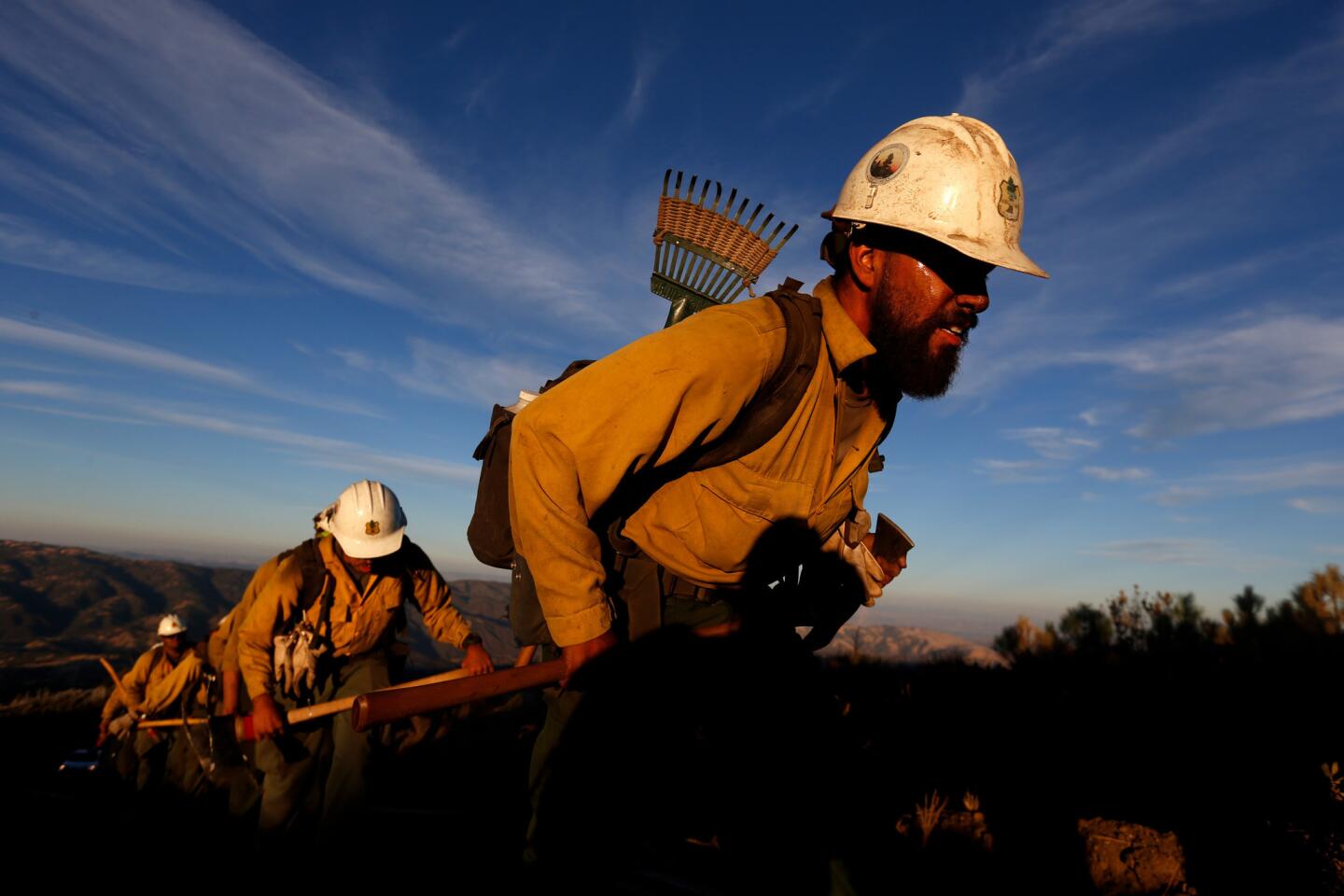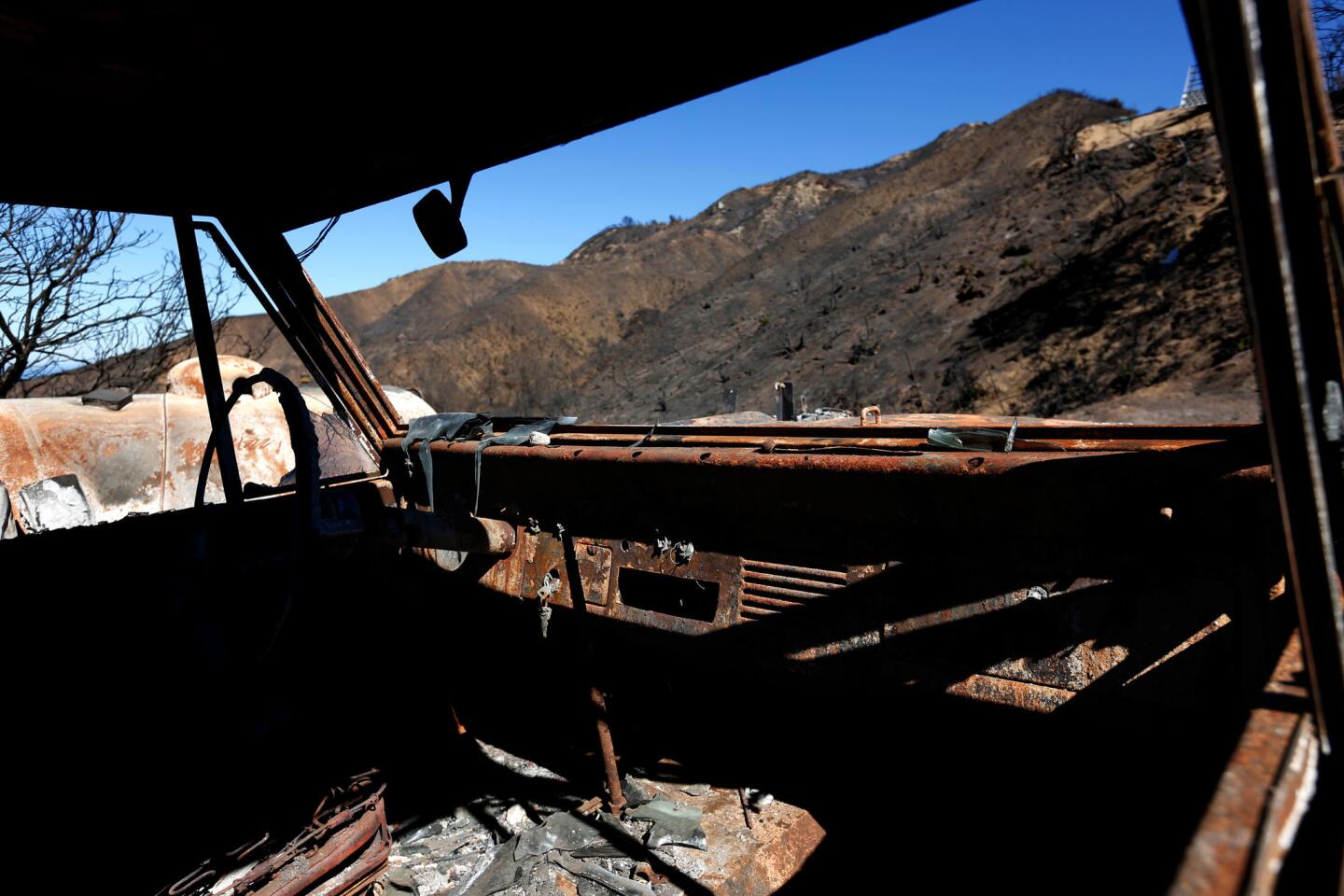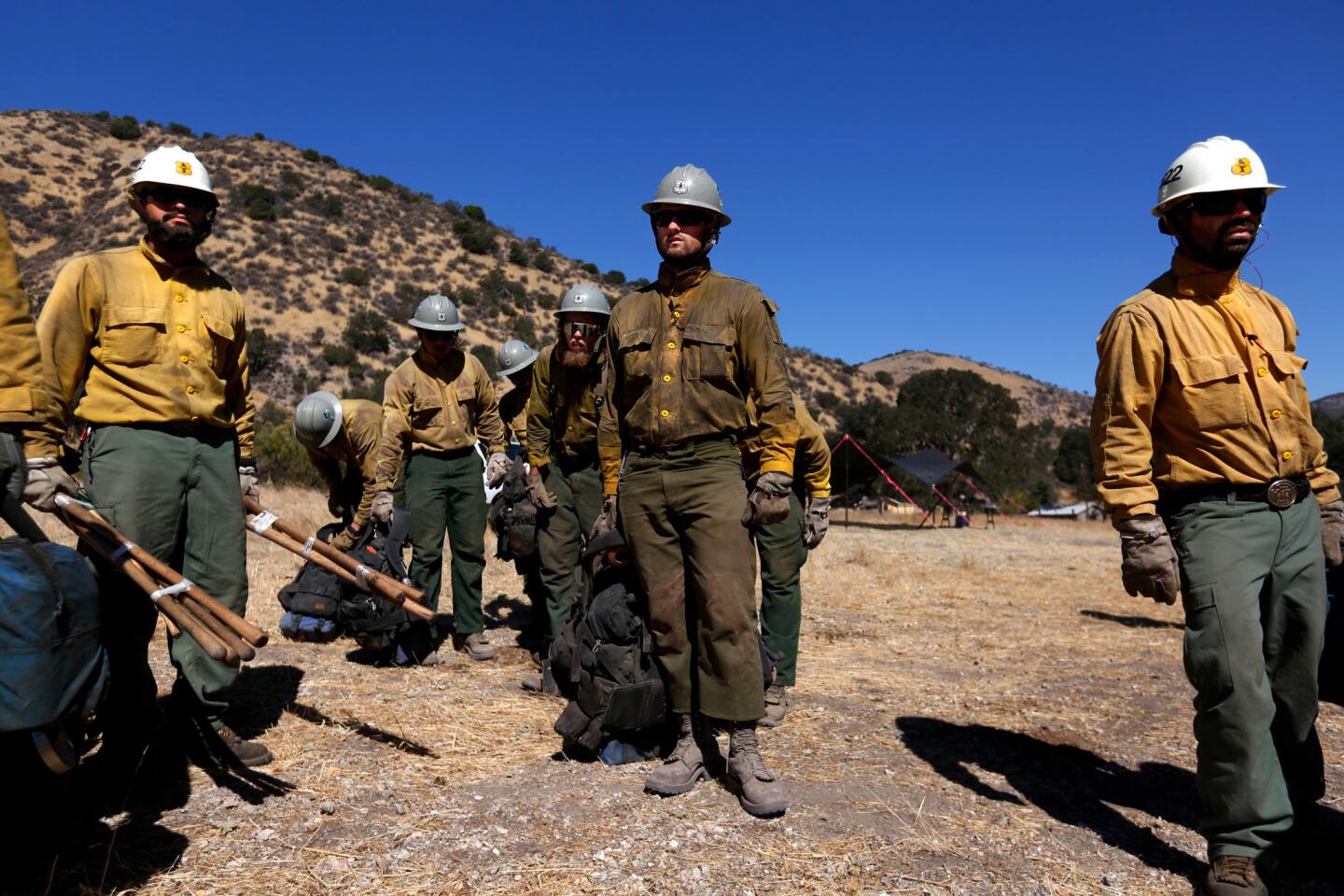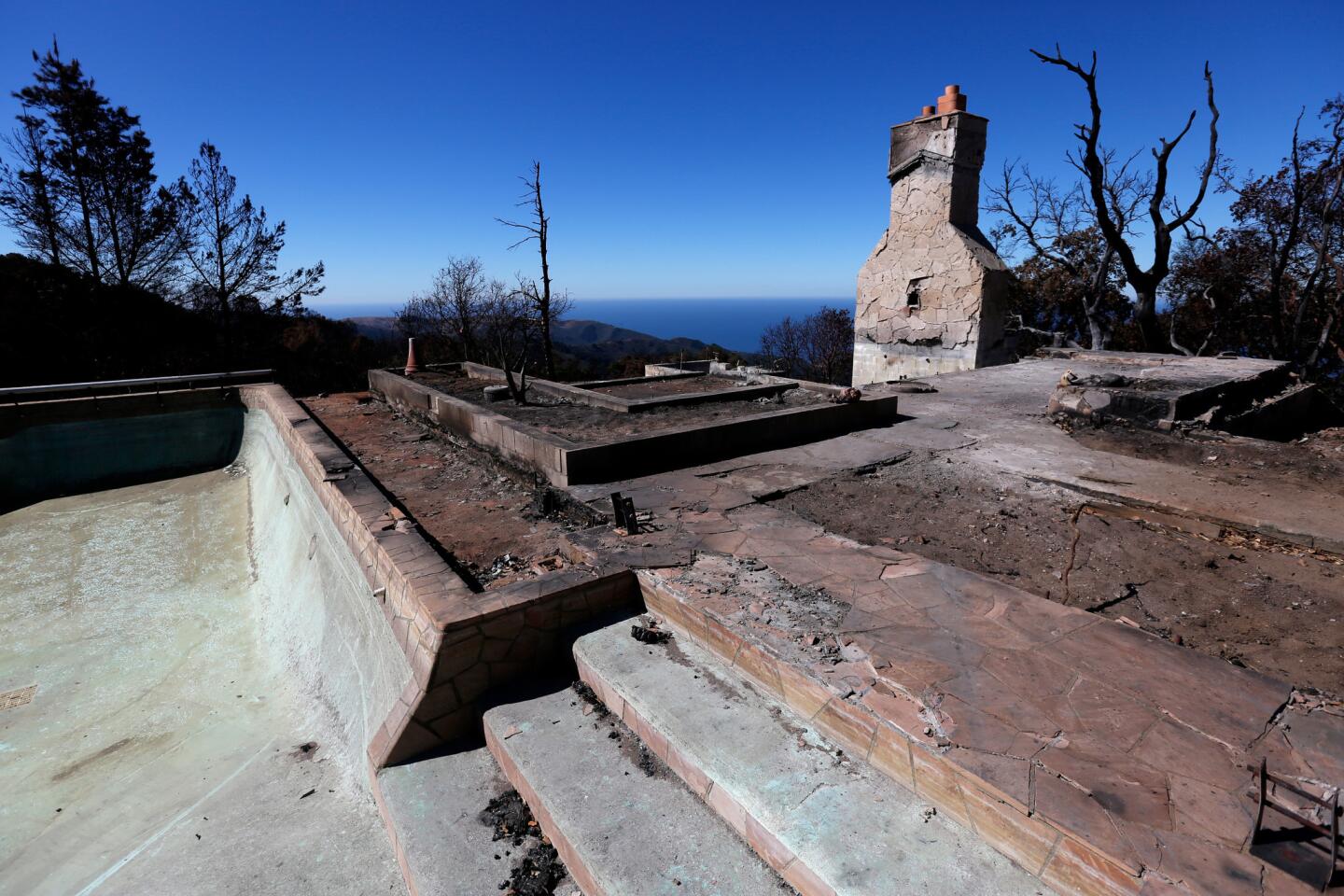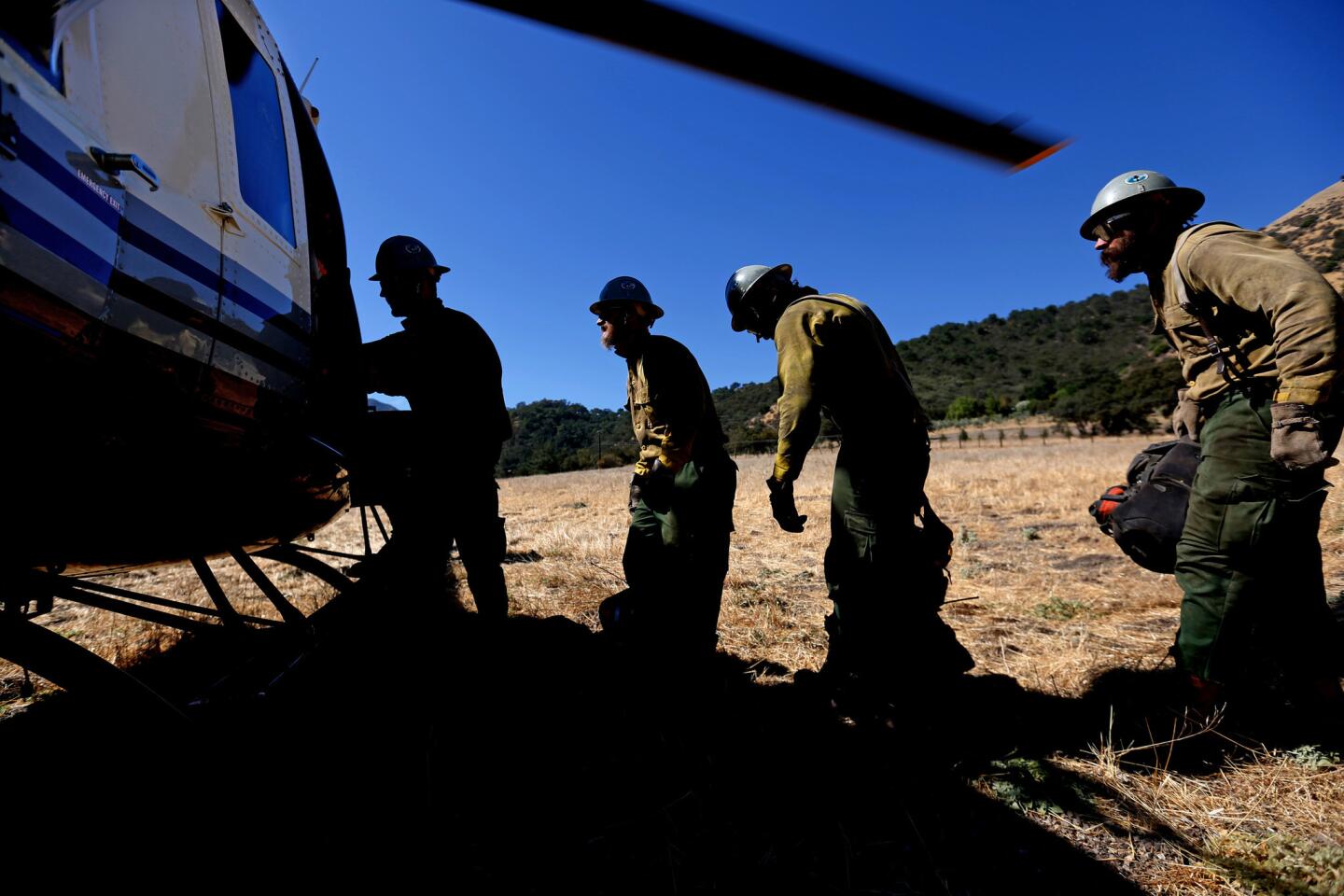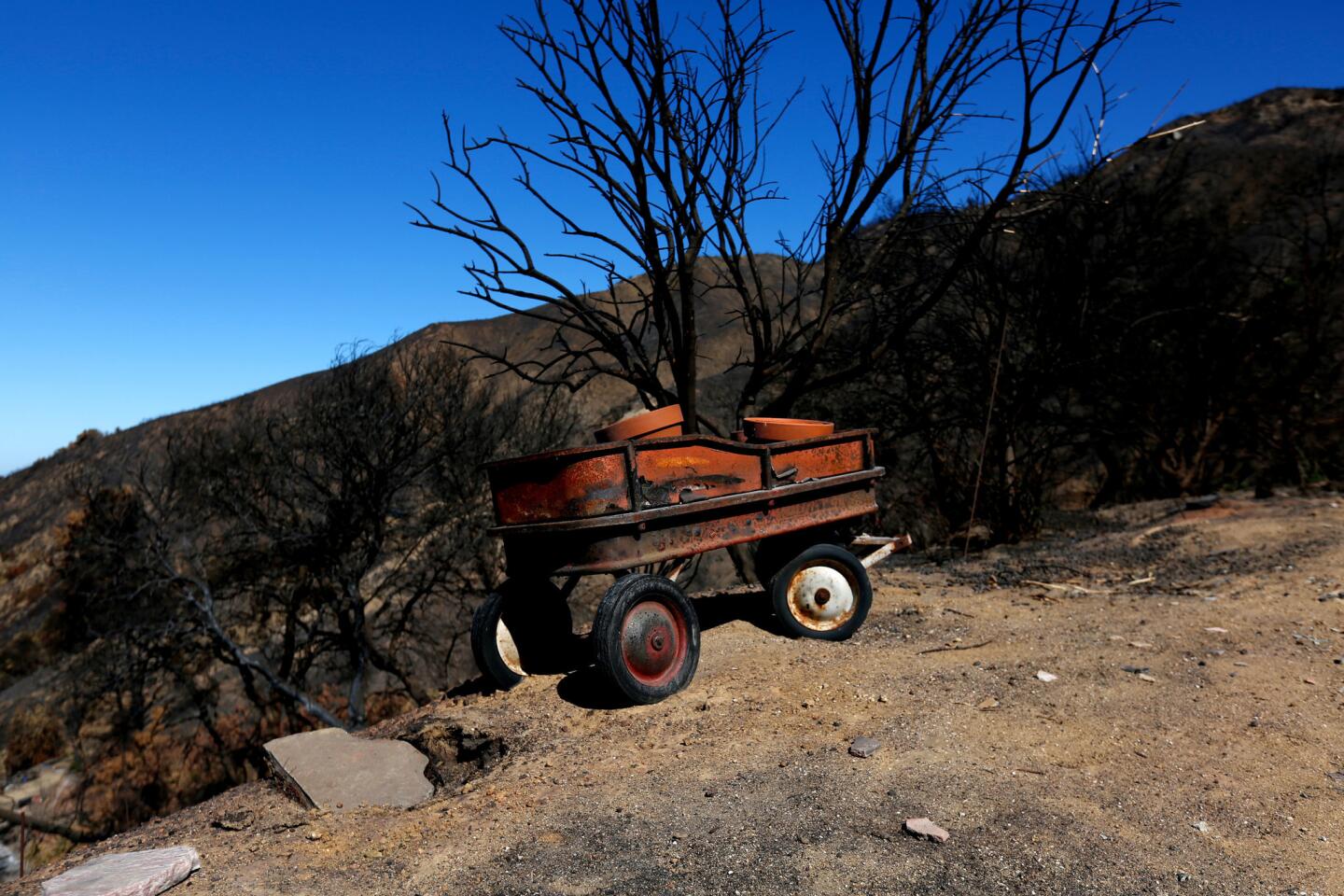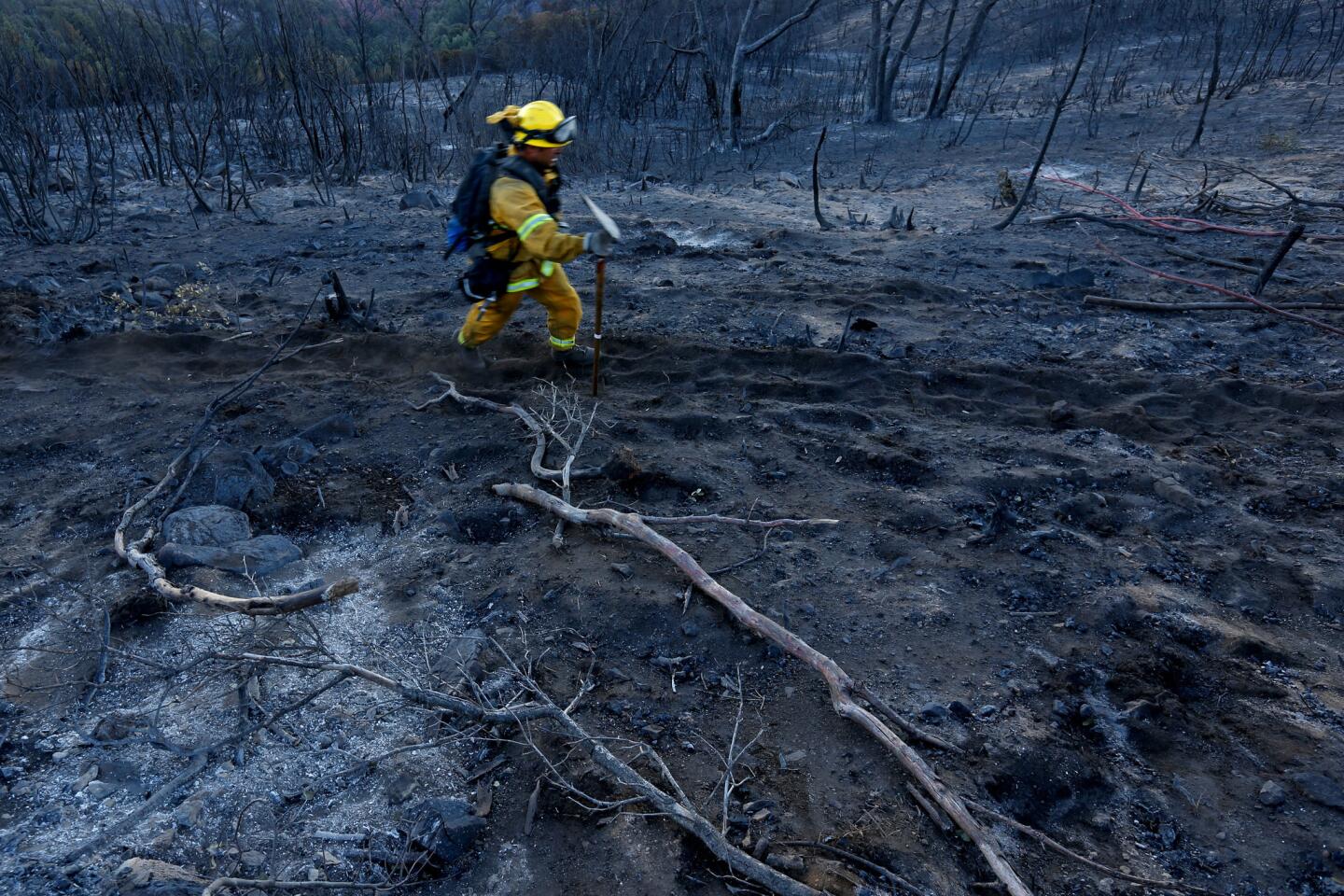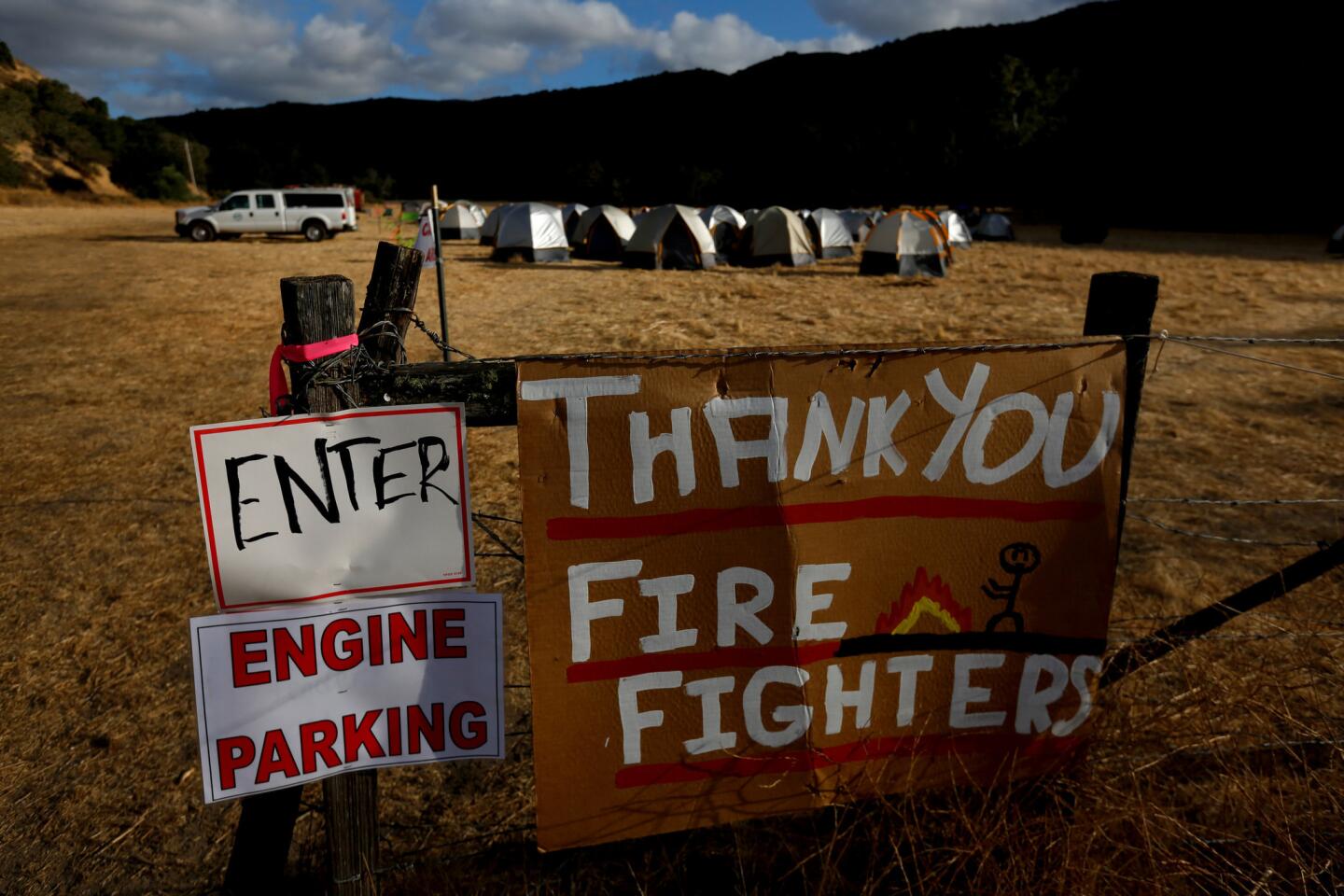The blaze that won’t die: How Monterey County wildfire became one of costliest to fight
- Share via
Growing up in the scenic Carmel Valley Village, Vanessa Radley has seen her share of fires spread across the picturesque mountains and ranch land east of Big Sur.
But the blaze burning through the rough terrain has left even the most resilient Monterey County residents rattled and on guard.
She and thousands of others in the coastal hillside have spent a good chunk of their summer dodging the Soberanes fire, a blaze that simply will not die. California has seen larger and more destructive fires, but the Soberanes fire has become infamous because of the myriad difficulties firefighters have faced in trying to tame the out-of-control inferno.
With hundreds of firefighters on the lines for two months now, it has become one of the most expensive wildfires in U.S. history, costing at least $229 million, officials said.
Moving through nearly impossible-to-access terrain and fed by drought-shriveled fuels that are all but desperate to burn, the Soberanes fire has swallowed up more than 126,000 acres and destroyed several dozen homes since it was sparked by an illegal campfire on July 22, officials said.
“We’ve never had that feeling of ‘we’re out of the woods,’” said Cmdr. Bob Moses, who heads the Monterey County Sheriff’s Department’s SWAT team and has been involved in fire operations.
That leaves people like Radley on edge, not sure when wind gusts might send the fire surging back in her direction. She knows other communities have been evacuated in the middle of the night, and Radley said she’s been doing laundry nearly every day to ensure her family is ready to flee.
“I make sure to have the phone by the bed at night,” she says with a nervous smile.
Radley’s home is located near what firefighters hope to be one of the last battlegrounds in a two-month struggle.
The stubbornness of the Soberanes fire is the latest sign of how years of drought have contributed to a difficult fire season. Major fires across the state — in Lake and Kern counties, along the San Diego County border with Mexico and in the Cajon Pass area near San Bernardino, have destroyed hundreds of homes and left six people dead. Fire officials said the situation could get worse as Santa Ana winds pick up in Southern California is the coming months.
From the beginning, the blaze has proved difficult to battle. When it started, firefighters had to hike nearly two miles just to access the flames lapping hungrily at brush near the Soberanes Creek Trail. As the blaze surged in size, growing between 5,000 and 6,000 acres each day during the first week, firefighters struggled to get in close enough to stop its advance.
“What ultimately creates containment lines is boots on the ground. There’s a misconception that aerial operations extinguish fires,” said Steve Kliest, a spokesman for the Soberanes fire response. “We have essentially a giant campfire that will not be penetrated completely by air resources.”

In ideal conditions, firefighters would be able to approach the blaze directly and battle the flames just feet from the body of the fire. But the steep rocky ridges of the Los Padres National Forest and Garrapato State Park, where the bulk of the fire has burned, have made direct access nearly impossible for hand crews. Aside from the difficulty of getting personnel near the body of the fire, the treacherous slopes also make it tough for firefighters to escape if the flames advance toward them.
Containing the fire has been less about battling the blaze up close and more about trapping it, officials said. Response teams have strategically set fire to swaths of dry grass and cut down patches of trees that would allow the blaze to travel toward more populated areas. Last week, officials were hopeful that a final so-called “burnout” along the ridges over Arroyo Seco would pin the fire inside the forest, where it can be monitored until rains come and completely extinguish it later this year.
While firefighters had planned to use strategic burns to keep the fire away from Arroyo Seco, officials said a favorable weather shift last weekend allowed firefighters to get in close and establish containment lines by directly attacking the blaze. Evacuation warnings for the Arroyo Seco area were lifted on Monday, officials said.
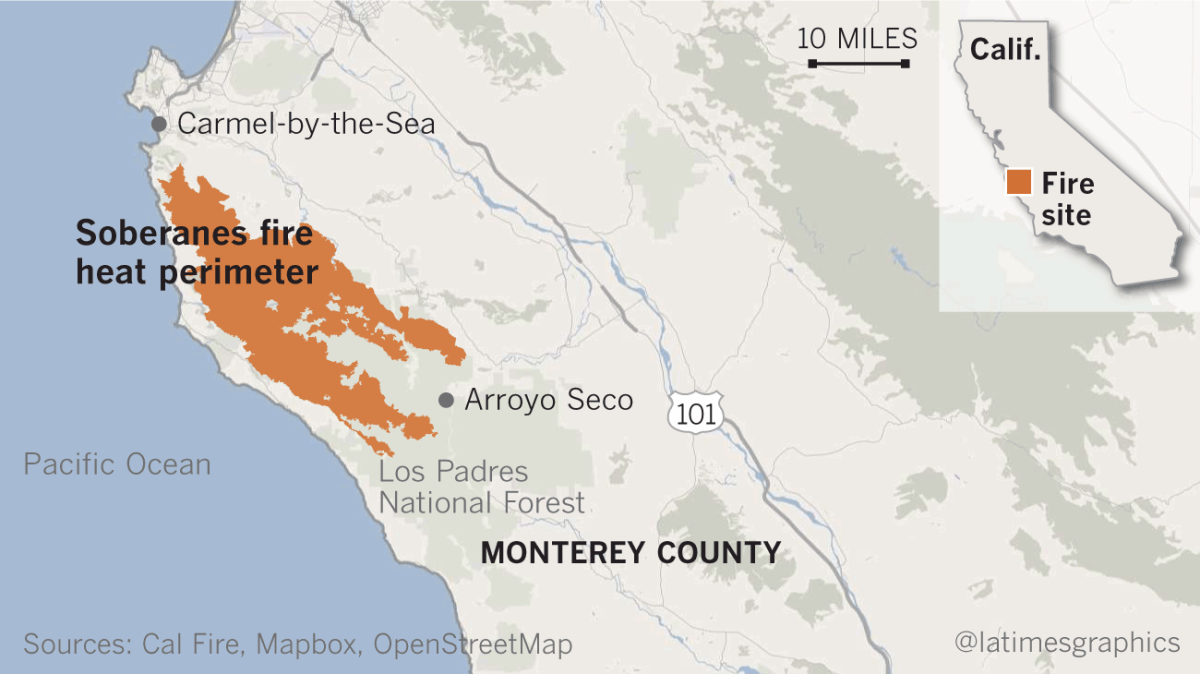
While the fire is mostly confined to wilderness now, it was far more destructive in its early days. From July 22 to July 30, more than 50 homes were destroyed along the Palo Colorado Canyon near the Pacific Coast Highway and in the Carmel Highlands. A bulldozer operator, Robert Reagan, was killed in an accident while working on a rugged slope, fire officials said.
Some officials have described the fire as the most expensive the U.S. Forest Service has ever fought. But Jennifer Jones, a spokeswoman for the National Interagency Fire Center, said that’s likely not true because those figures don’t account for inflation. Firefighting equipment, the cost of setting up base camps for firefighters around the county and the sheer duration of the blaze have driven up costs, according to Elaine Briggs, a spokeswoman for the California Interagency Management Team that has overseen much of the blaze.
The cost of just the firefighting equipment being used is roughly $69 million, according to Briggs. Officials also have had to house firefighters in four camps — with laundry facilities, sleeping quarters, showers and other necessities — which Briggs said accounted for roughly 32% of the entire bill.
The fire has advanced toward sparsely populated areas since then, which has helped minimize threats to property and public safety, but also made the blaze even tougher to battle.
An acrid smoke odor hangs thick in the air along Chews Ridge, a mountain peak near the Tassajara Hot Springs resort that provides one of the best points to see the massive ash cloud rising from the belly of the fire. A series of surprise wind gusts caught firefighters off guard last week, launching embers toward Chews Ridge and creating a second fire that burned several hundred acres while first responders were in the midst of a shift change, said Brentwood Reid, another spokesman for the firefighting effort.
The secondary fire was sparked deep in a valley where there is little to no space for a helicopter to land, meaning firefighters had to hike down extremely steep ridges and along ground that tends to shift underfoot as they walk.
“This is just unforgiving country,” said Jake Cagle, a Kern County fire captain on hand to battle the blaze.
While the fire has caused pockets of panic whenever it approaches an area where homes may be threatened, most Monterey County residents seem confident that fire crews have it penned inside the forest.
And tourists and locals can be seen perusing the shops and restaurants along Monte Verde Street, one of Carmel-by-the-Sea’s main thoroughfares, as if oblivious to the hint of charcoal in the air and smoke cloud hanging over heads. Signs praising the firefighters’ efforts are ubiquitous along Carmel Valley Road, while a simple message of “Thxs Heros” is painted in grafitti stylings along a mountain ridge lining the scenic Laureles Grade Pass.
Another kind of drought: Inmate fire crews dwindle as wildfire season grows ever longer »
Jenny Angier, a waitress at the Running Iron restaurant in Carmel Valley where many firefighters enjoy a meal between shifts, said she’s less concerned about the fire’s advance and more about the long-term effects of the blaze. The fire destroyed several hiking trails and closed large swaths of state park land along the coast, which blunted tourism revenues in the area and put some locals out of work. The weeks spent breathing in smoke have also tested her patience at times.
“I have asthma. I’ve been using my medication more than I ever have in my entire life,” she said.
Other residents say panic has followed the path of the fire. Ernie Long, a 58-year-old mediator from Sacramento who spends his weekends at a home in the Carmel Valley Village area, remembers the fear he felt as the fire advanced toward his one-story ranch home on Paso Hondo Road in July. Ash rained down on Long’s home while firefighters remained stationed on a nearby baseball diamond, a last line of defense between his home and tongues of hungry yellow flames.
“If the fire had come over this ridge, there would have been absolutely no way to stop it,” Long said, pointing out his living room window to a row of houses that would have served as tinder.
The fire has moved in the opposite direction in recent weeks, moving southeast toward Arroyo Seco. But the mere sight of fire can still stoke fear in the community. Last week, crews burned away grass and other fuels on a mountain ridge to stop the fire’s advance, and smoke clouds wafted into the Carmel Valley again, causing Long to wonder if he was in danger for a second time.
“When they did that burn it was like ‘Oh, lord,’” Long said. “Is it coming back?”
Follow @JamesQueallyLAT for crime and police news in California.
ALSO
'Above average' wildfire activity is forecast through October
California wildfires scorch parched hillsides and destroy one home in sweltering heat
Man gets prison and must pay $61 million for starting huge fire in the Sequoia National Forest
Sign up for Essential California
The most important California stories and recommendations in your inbox every morning.
You may occasionally receive promotional content from the Los Angeles Times.

